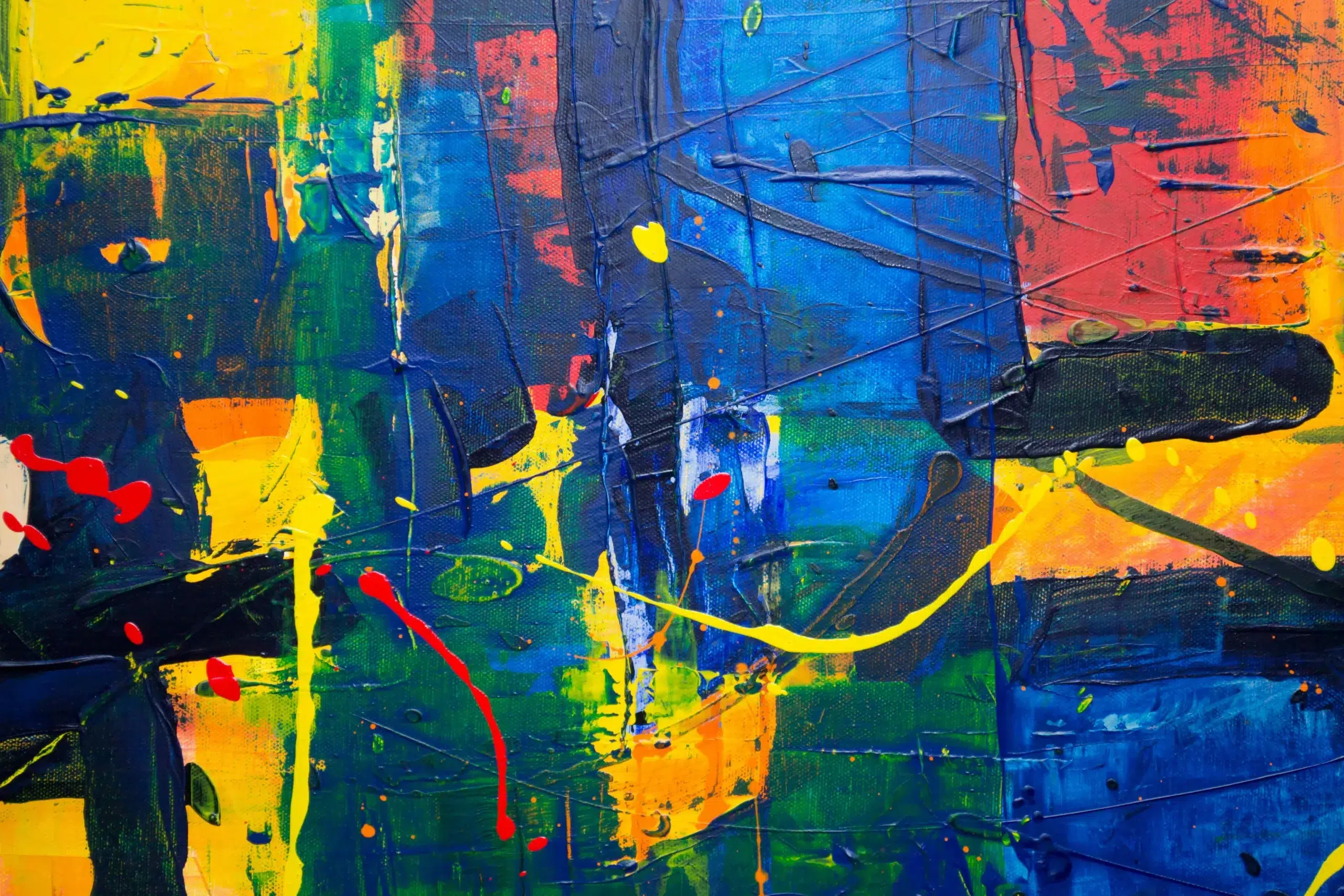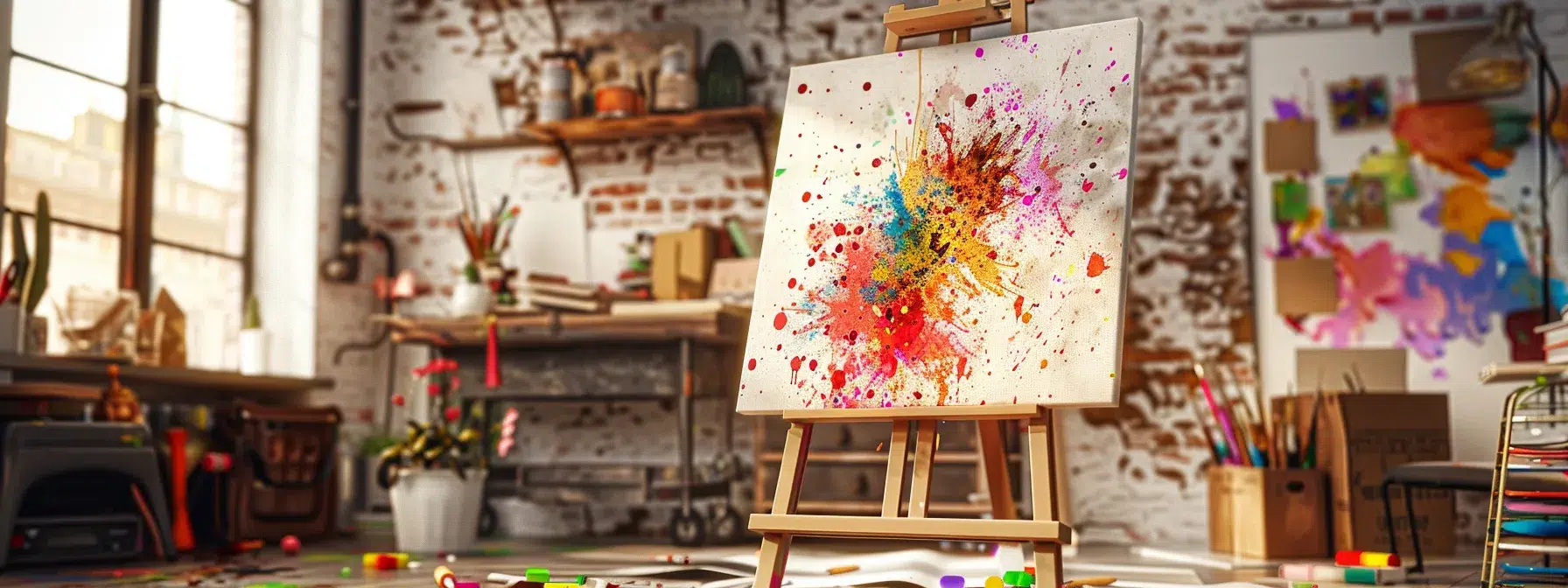Are you seeking a creative way to manage stress and anxiety? Splatter paint art therapy offers a unique approach to emotional healing and self-expression. This article explores the therapeutic benefits of splatter painting, including its ability to reduce anxiety, improve focus, and promote relaxation. You’ll learn how to start your own splatter paint practice at home, using simple tools like brushes and paint to create expressive works of art. Discover how this hands-on technique can help you find relief from pain and enhance your overall well-being.
Key Takeaways
- Splatter paint art therapy combines expressive techniques with therapeutic principles for stress relief and emotional exploration
- The physical act of splatter painting engages both mind and body, promoting mindfulness and present-moment awareness
- Art therapy, including splatter painting, can bypass verbal barriers and tap into the subconscious mind
- Splatter painting techniques develop fine and gross motor skills while stimulating sensory awareness.
- Community programs and personal stories demonstrate the effectiveness of splatter paint art therapy in various settings
Understanding Splatter Paint Art Therapy

Splatter paint art therapy combines Jackson Pollock’s expressive techniques with therapeutic principles. This unique art experience engages both mind and body, allowing participants to explore emotions and reduce stress in a dedicated space. The following sections delve into the origins of splatter painting, its physical and mental benefits, and the psychological foundations of art therapy.
The Origins of Splatter Painting
Splatter painting emerged as a revolutionary art form in the mid-20th century, pioneered by American artist Jackson Pollock. This technique involves dripping, pouring, and splattering paint onto a canvas, creating abstract and dynamic paintings. The exercise of splatter painting encourages spontaneous creativity and self-expression, allowing artists to explore color and form freely. As a stress-relieving activity, it has gained popularity in art therapy settings, offering individuals a unique way to channel emotions and reduce tension through the physical act of painting.
Engaging the Mind and Body Through Art
Splatter paint art therapy engages both the mind and body in a unique way. As participants fling, drip, and print abstract patterns with paint, their bodies move in expressive, unrestricted motions. This physical act connects directly to their emotional state, allowing them to release pent-up feelings by creating vibrant, colorful items. The process encourages individuals to focus on the present moment, freeing their minds from everyday stressors and promoting a sense of calm through artistic expression.
The Psychological Principles Behind Art Therapy
Art therapy, including splatter paint techniques, uses psychological principles to promote healing and self-expression. Individuals engage with abstract art and aesthetics in an art studio to process emotions and experiences. This approach recognizes that creative activities, such as spinning art or using a paintbrush, can bypass verbal barriers and tap into the subconscious mind. The psychological foundations of art therapy include:
- Catharsis through artistic expression
- Mindfulness and present-moment awareness
- Improved self-esteem and sense of accomplishment
- Non-verbal communication of complex emotions
- Stress reduction through creative flow
Emotional Benefits of Splatter Painting

Splatter painting offers powerful emotional benefits through action painting therapy. This creative process allows individuals to express emotions freely with color, reduce stress through artistic release, and enhance mood and self-confidence. From managing anger to improving overall health, splatter paint art therapy provides a unique outlet for emotional expression, even impacting one’s choice of clothing as a form of self-expression.
Expressing Emotions Freely With Color
Splatter paint art therapy offers a unique way to express emotions through color. Participants can use various tools to create vibrant strokes on paper, from traditional paintbrushes to unconventional items like toothbrushes. This therapeutic process allows individuals to externalize their feelings without needing words, making it particularly beneficial for those who struggle with verbal expression. The act of splattering paint can be especially cathartic, enabling people to release pent-up emotions in a safe and creative environment.
Reducing Stress Through Creative Release
Splatter painting offers a powerful outlet for stress reduction, benefiting mental health and brain function. The act of freely flinging paint onto a canvas engages the mind in a form of active meditation, allowing individuals to release tension and enter a state of flow. This creative process stimulates the brain’s reward centers, promoting relaxation and reducing cortisol levels. As participants focus on the art-making process, they often experience a temporary escape from daily stressors, leading to improved overall well-being. The benefits of this creative release include:
- Decreased anxiety and tension
- Improved mood and emotional regulation
- Enhanced cognitive flexibility
- Increased sense of control and empowerment
- Better stress management skills
Enhancing Mood and Self-Confidence
Splatter painting enhances mood and self-confidence by providing a sense of accomplishment and creative expression. Individuals who create unique artworks through spontaneous paint application often experience a boost in self-esteem. This process allows people to see their emotions translated into visual form, validating their feelings and fostering a sense of pride in their artistic creations. The non-judgmental nature of splatter painting encourages experimentation and self-discovery, increasing confidence in one’s creative abilities and decision-making skills.
Physical Advantages of Splatter Paint Techniques

Splatter paint techniques offer physical benefits beyond emotional expression. These methods develop fine and gross motor skills through various painting movements. The process stimulates sensory awareness, engaging multiple senses simultaneously. Additionally, splatter painting promotes mindfulness, encouraging participants to focus on the present moment and their physical actions.
Developing Fine and Gross Motor Skills
Splatter painting techniques offer a unique opportunity to develop both fine and gross motor skills. The act of flinging paint requires controlled arm movements, enhancing gross motor skills, while precise dripping or splattering techniques refine fine motor control. These physical actions improve hand-eye coordination and spatial awareness, benefiting individuals of all ages and abilities. As participants engage in various painting motions, they strengthen muscles and increase flexibility, contributing to overall physical well-being.
Sensory Stimulation and Awareness
Splatter painting engages multiple senses, enhancing sensory awareness and stimulation. Participants experience the tactile sensation of paint on their hands, the visual impact of color blending, and the auditory feedback of paint splattering. This multi-sensory engagement promotes mindfulness and heightens overall sensory perception. The process helps individuals become more attuned to their physical experiences, improving body awareness and sensory integration. Sensory benefits of splatter painting include:
- Enhanced tactile sensitivity
- Improved visual discrimination
- Increased auditory processing
- Better proprioceptive awareness
- Heightened olfactory sensitivity
Promoting Mindfulness and Present-Moment Focus
Splatter painting promotes mindfulness and present-moment focus through its immersive nature. As participants engage in the act of splattering paint, they become absorbed in the process, focusing their attention on the movements, colors, and textures. This intense concentration helps individuals stay grounded in the present, reducing rumination on past events or future worries. The rhythmic motions and visual stimulation of splatter painting create a meditative state, enhancing overall mindfulness and reducing stress:
Implementing Splatter Art Therapy at Home

Implementing splatter art therapy at home offers a personal and accessible way to explore this creative outlet. This section covers setting up a dedicated art space, introducing beginner-friendly techniques, and involving family and friends in creative activities. These steps enable individuals to harness the therapeutic benefits of splatter painting in a comfortable, familiar environment.
Setting Up a Personal Art Space
Creating a dedicated art space at home enhances the splatter paint therapy experience. Individuals can designate a corner of a room or an entire area for their creative pursuits. This space should include protective coverings for floors and walls, ample lighting, and storage for art supplies. A dedicated area allows for spontaneous expression and provides a visual reminder to regularly engage in therapeutic art activities.
Beginner Techniques for All Skill Levels
Splatter paint art therapy offers accessible techniques for beginners and experienced artists. Participants can start with simple methods like drip painting, where paint can fall naturally onto the canvas, or flicking paint using a brush or stick for controlled splatters. More advanced techniques include pouring paint directly onto the surface or using unconventional tools like sponges or rollers to create unique textures. These beginner-friendly approaches allow individuals to explore their creativity without pressure, focusing on the therapeutic process rather than the final product:
- Drip painting: Let paint fall naturally onto the canvas
- Flicking: Use a brush or stick for controlled splatters
- Pouring: Apply paint directly onto the surface
- Texture creation: Experiment with sponges or rollers
- Tool exploration: Try unconventional items for unique effects
Involving Family and Friends in Creative Activities
Involving family and friends in splatter paint activities enhances the therapeutic experience and strengthens social bonds. Participants can organize group sessions, encouraging everyone to express themselves freely through paint. These shared creative moments foster communication, empathy, and mutual support. The collaborative nature of group splatter painting also promotes teamwork and collective problem-solving as participants work together to create larger artworks or themed pieces:
Starting Your Journey With Splatter Paint Art Therapy

Starting a splatter paint art therapy journey involves finding workshops, gathering materials, and developing a fulfilling practice. This section guides readers through locating professional guidance, selecting essential supplies, and implementing effective techniques for a rewarding creative experience. These steps help individuals harness the therapeutic benefits of splatter painting in their lives.
Finding Workshops and Professional Guidance
Individuals interested in splatter paint art therapy can find workshops and professional guidance through local art centers, community colleges, and mental health facilities. Many art therapists offer specialized sessions focusing on this expressive technique. Online platforms also provide virtual workshops and courses, making it accessible for those unable to attend in-person sessions. Aspiring participants should research credentials and experience when selecting a workshop or therapist to ensure a safe and effective therapeutic experience.
Gathering Essential Materials and Supplies
Gathering essential materials for splatter paint art therapy involves selecting appropriate paints, canvases, and protective gear. Acrylic paints are often preferred for their versatility and quick-drying properties. Large canvases or durable paper provide ample space for expression, while drop cloths protect surrounding areas. Participants should also consider brushes, spatulas, and unconventional tools like sponges or squeeze bottles for varied effects. Protective clothing, gloves, and eye goggles ensure safety during the creative process.
Tips for a Fulfilling Creative Practice
To cultivate a fulfilling creative practice in splatter paint art therapy, individuals should establish a regular schedule for their sessions, allowing time for both experimentation and reflection. Setting intentions before each session helps focus the creative energy and maximize therapeutic benefits. Participants can enhance their practice by exploring various techniques, such as layering colors or incorporating different textures, to keep the process engaging and stimulating. Maintaining a journal to document thoughts and emotions associated with each artwork can deepen the therapeutic experience and track personal growth over time.
Conclusion
Splatter paint art therapy offers a powerful fusion of creative expression and emotional healing, providing individuals with a unique outlet to explore their feelings and reduce stress. Through the physical act of splattering paint, participants engage both mind and body, developing motor skills and promoting mindfulness while expressing themselves freely with color. This therapeutic approach has shown significant benefits in personal stories, community programs, and professional settings, improving mental health, self-confidence, and overall well-being. By embracing splatter paint art therapy, individuals can tap into a transformative tool for self-discovery, stress relief, and emotional growth, making it a valuable addition to mental health practices and personal development strategies.

